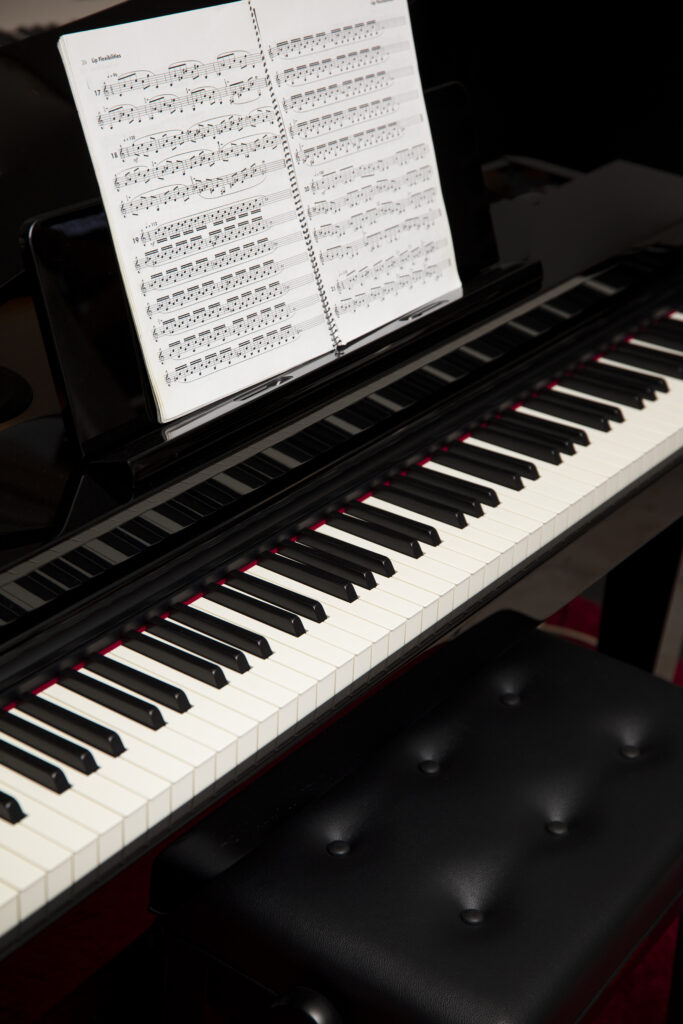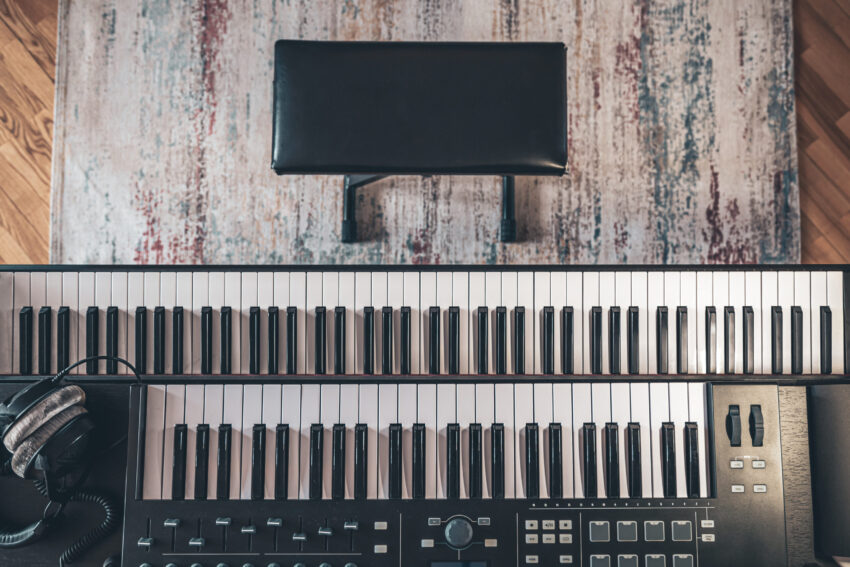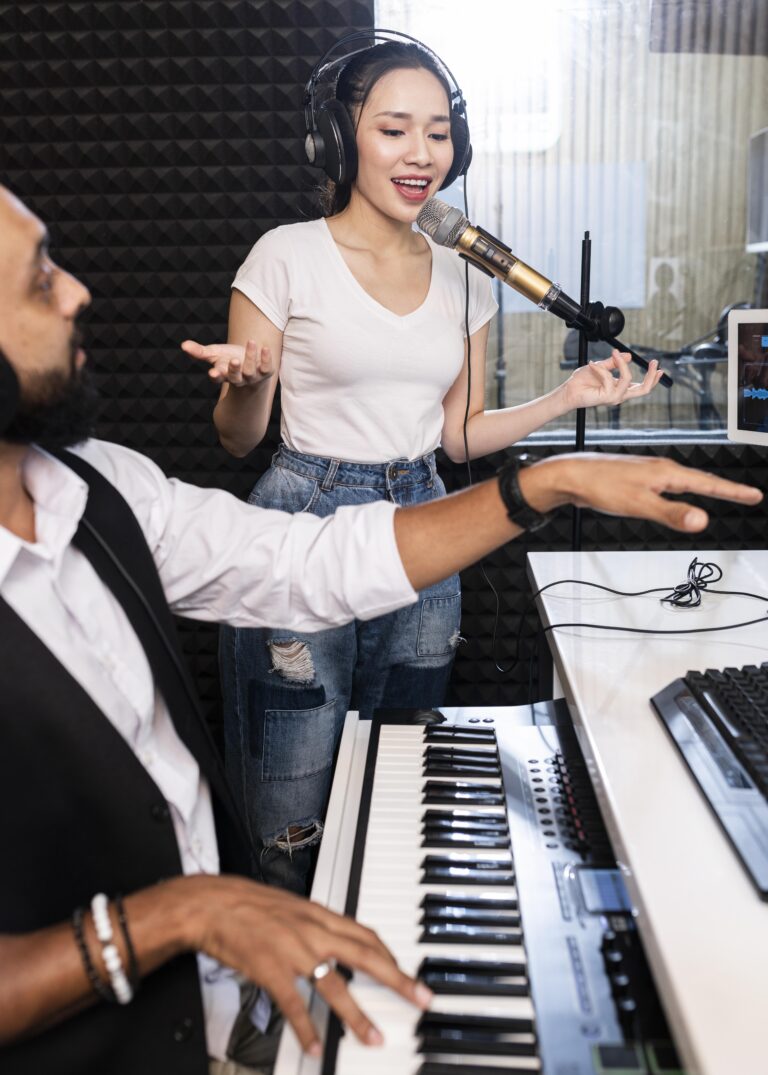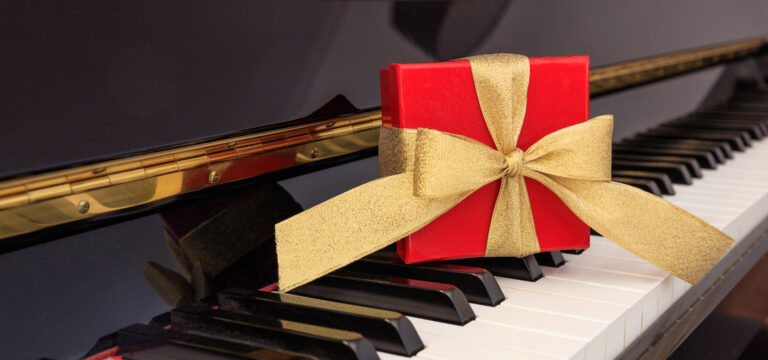Accelerated Piano Course for Beginners: Learn Piano Faster and Easier
Are you interested in learning to play the piano but don’t have the time for traditional lessons? Perhaps you’re a busy adult who wants to pick up a new hobby, or a parent looking for an accelerated course for your child. Whatever your reason, an accelerated piano course for beginners may be just what you need.

An accelerated piano course is designed to teach you the basics of piano playing in a shorter amount of time than traditional lessons. In this type of course, you will learn how to read sheet music, play scales and chords, and even learn a few simple songs. The goal is to give you a solid foundation in piano playing so that you can continue to improve on your own or with further lessons.
Fundamentals of Piano Playing
Understanding the Keyboard Layout
Before you start playing the piano, it’s important to understand the layout of the keyboard. The piano keyboard consists of 88 keys, with each key representing a different note. The keys are arranged in a pattern of white and black keys, with the black keys grouped in twos and threes.
The white keys are labelled with the letters A through G, and the black keys are known as sharps (#) and flats (b). The black keys are located between the white keys and are used to play the notes that fall between the white keys.
Basic Music Theory
To become a good piano player, it’s important to have a basic understanding of music theory. This includes understanding the different musical terms, such as tempo, dynamics, and rhythm.
You should also be familiar with the different types of notes and rests, as well as the time signature of the piece you are playing. This knowledge will help you read sheet music and play the correct notes at the right time.
Finger Placement and Posture
Proper finger placement and posture are essential for playing the piano correctly. Your fingers should be curved and your wrists should be level with the keys. Your feet should be flat on the floor and your back should be straight.
When playing the piano, your fingers should be placed on the keys with the tips of your fingers, not the pads. This allows for better control and accuracy when playing.
By understanding the keyboard layout, basic music theory, and proper finger placement and posture, you will be well on your way to becoming a successful piano player.
Reading Sheet Music
Introduction to Musical Notation
As a beginner in an accelerated piano course, it is important to understand the basics of musical notation. Sheet music is a visual representation of music, and it is written on a staff consisting of five horizontal lines and four spaces. Each line and space represents a different pitch.
To read sheet music, you must first understand the musical alphabet, which consists of the letters A through G. Each letter represents a different pitch, and they are repeated throughout the staff.
Rhythm and Timing
In addition to understanding pitch, it is also important to understand rhythm and timing. Sheet music includes symbols that indicate how long to hold each note and how to play it. These symbols include whole, half, quarter, and eighth notes.
It is also important to understand rests, which indicate periods of silence in the music. Rests are also represented by symbols and are essential to creating a well-timed and rhythmic performance.
Bar, Bar Lines and Time Signatures
Sheet music is divided into bars, which are separated by vertical lines called bar lines. Each bar contains a specific number of beats, which is indicated by the time signature. The time signature is located at the beginning of the piece and consists of two numbers. The top number indicates the number of beats per bar, while the bottom number indicates the type of note that receives one beat.
Key Signatures and Scales
Key signatures are also an important aspect of sheet music. They indicate the notes that will be played sharp or flat throughout the piece. Understanding key signatures is essential to playing the correct notes and creating a harmonious performance.
Scales are a series of notes played in a specific order, and they are an important aspect of piano playing. Understanding scales and their relationship to key signatures is essential to playing the piano proficiently.
All Hail The Grand Staff
The grand staff is a combination of the treble and bass clefs, and it is used to notate music for the piano. The treble clef is used for the right hand, while the bass clef is used for the left hand. Understanding the grand staff is essential to playing piano pieces that require both hands.

Mastering the piano hinges on grasping musical notation, including pitch, rhythm, timing, bars, time signatures, key signatures, scales, and the grand staff.
Practicing Techniques
As a beginner in an accelerated piano course, practising is key to your success. Here are some practising techniques that will help you improve your skills faster.
Warm-Up Exercises
Before you start practising, it’s essential to warm up your hands and fingers. Start by stretching your fingers and wrists. Then, play some simple exercises such as Hanon’s “The Virtuoso Pianist” or Czerny’s “School of Velocity.” These exercises will help you develop finger strength and dexterity.
Scales and Arpeggios
Scales and arpeggios are fundamental to piano playing. Practice them in all keys, starting with the major and minor scales. Once you’ve mastered those, move on to more advanced scales such as harmonic and melodic minor scales. Arpeggios are also essential, as they help you develop finger independence and control.
Chord Progressions
Chord progressions are the backbone of many songs. Practice playing chord progressions in different keys, starting with simple progressions such as I-IV-V. Once you’ve mastered those, move on to more advanced progressions. You can also practice playing chords in different inversions, which will help you develop finger strength and independence.
Incorporating these techniques into your practice routine will help you improve your piano playing skills faster. Remember to practice consistently and with patience, and you’ll see progress in no time.
Playing Your First Song
Congratulations! You’ve made it to the point where you’re ready to play your first song on the piano. This is an exciting moment, and we’re here to help you make the most of it.
Simple Melodies
The first song you’ll learn to play will likely be a simple melody. This is a great way to get started, as it allows you to focus on playing with your right hand and getting used to the feel of the keys. You’ll be surprised at how quickly you can pick up a simple melody, and how satisfying it is to play a recognizable tune.
Incorporating Left Hand
Once you’ve got the hang of playing with your right hand, it’s time to start incorporating your left hand. This can be a bit more challenging, as you’ll be playing two different parts at the same time. However, with practice, you’ll get the hang of it. Start by playing simple chords with your left hand, and gradually work your way up to more complex patterns.
Dynamics and Expression
As you become more comfortable with playing the piano, you’ll start to focus on dynamics and expression. This is what takes a simple melody and turns it into a beautiful piece of music. Experiment with playing louder and softer, and with adding subtle variations to the rhythm. With practice, you’ll be able to add your own personal touch to every song you play.
Remember, learning to play the piano takes time and practice. Don’t get discouraged if you don’t get it right away. With dedication and persistence, you’ll be playing beautiful music in no time.
Progressive Learning

Learning to play the piano can be challenging, but with the right approach and guidance, it can be an enjoyable and rewarding experience. The accelerated piano course for beginners is designed to help you learn quickly and efficiently. Here are some tips on how to make the most of your learning experience.
Setting Practice Goals
Setting practice goals is an important part of learning to play the piano. It helps you to stay focused and motivated and ensures that you are making progress. When setting practice goals, it is important to be realistic and specific. For example, you might set a goal of practising for 30 minutes every day or mastering a particular piece of music within a certain timeframe.
Building a Repertoire
Building a repertoire of music is an important part of learning to play the piano. It allows you to apply your skills and knowledge to a variety of different pieces and helps you to develop your style and preferences. When building a repertoire, it is important to choose pieces that are appropriate for your skill level, and that you enjoy playing.
Performance Tips
Performing in front of others can be nerve-wracking, but it is an important part of learning to play the piano. It helps you to develop confidence and stage presence and allows you to share your music with others. When preparing for a performance, it is important to practice regularly and to focus on the details of your performance, such as dynamics, tempo, and expression. You may also find it helpful to practice in front of friends or family members or to record yourself and listen back to your performance.
By following these tips, you can make steady progress and achieve your goals in the accelerated piano course for beginners. Remember to stay focused, practice regularly, and enjoy the process of learning to play the piano.
Frequently Asked Questions
What age range is the Accelerated Piano Adventures series suitable for?
The Accelerated Piano Adventures series is suitable for beginners of all ages, including children as young as 5 years old. The series has been designed to be accessible to a wide range of ages and skill levels, making it a great choice for anyone who wants to learn to play the piano.
Which piano method books are recommended for adult beginners?
For adult beginners, we recommend the Accelerated Piano Adventures for the Older Beginner series. This series has been specifically designed for adult learners, and it includes a range of materials that are well-suited for older students.
How long does it typically take to complete an accelerated piano course?
The length of time it takes to complete an accelerated piano course will depend on several factors, including the student’s skill level, their dedication to practice, and the specific course they are taking. However, most students can expect to complete an accelerated piano course within 6-12 months.
What are the essential first steps when starting to learn the piano?
The essential first steps when starting to learn the piano include learning the basics of music theory, practising proper hand positioning and posture, and developing a strong foundation in basic piano techniques. It’s also important to start with easy, simple pieces and gradually work your way up to more complex music.
Are there any online piano courses well-suited for absolute beginners?
Yes, many online piano courses are well-suited for absolute beginners. Some popular options include the Piano Marvel online course, the Hoffman Academy, and the Piano for All course.
What should one look for in a piano lesson book to ensure rapid progress?
When choosing a piano lesson book, it’s important to look for a book that is well-organized, easy to follow, and includes a range of exercises and practice materials. Look for a book that includes clear explanations of music theory concepts, and make sure the book is appropriate for your skill level.






